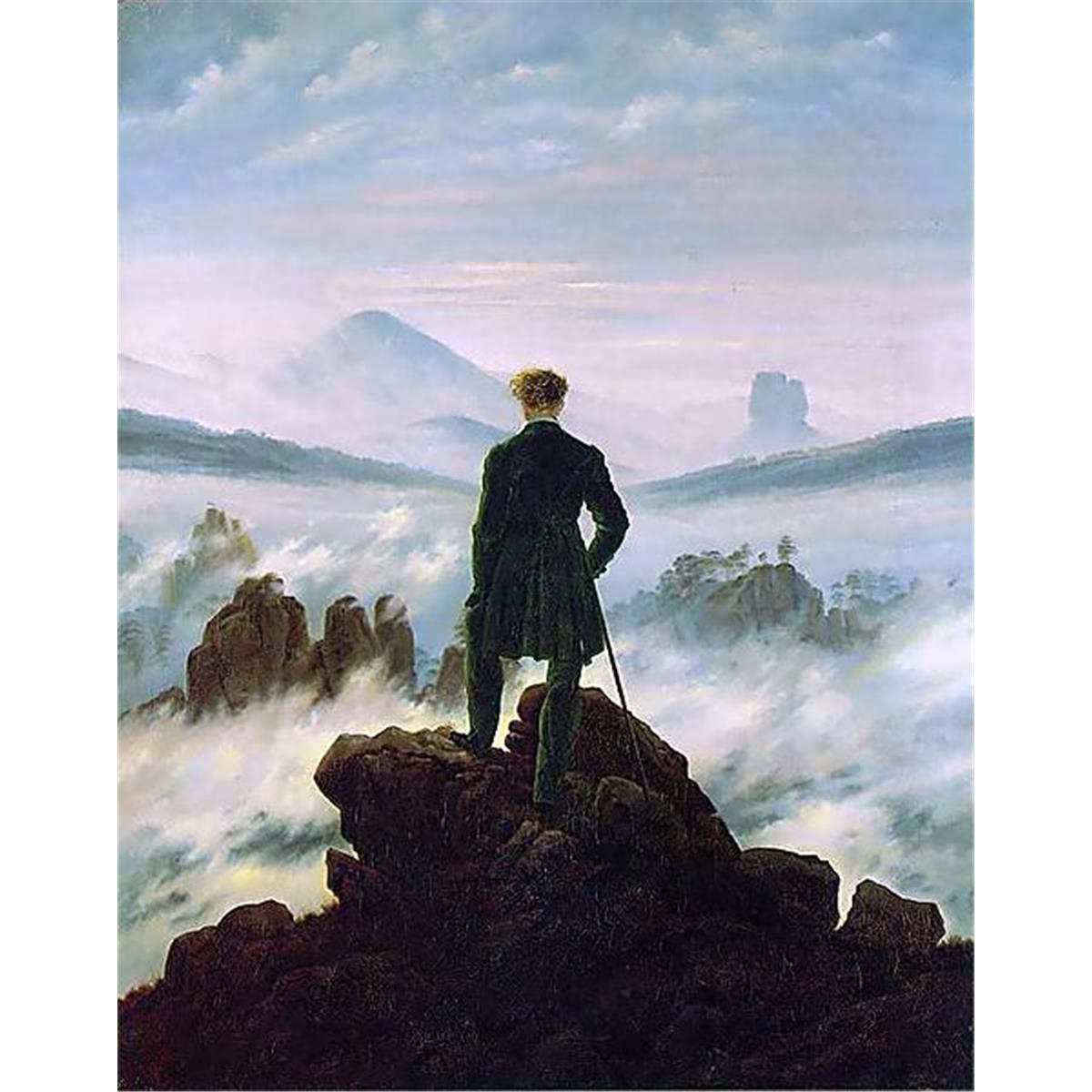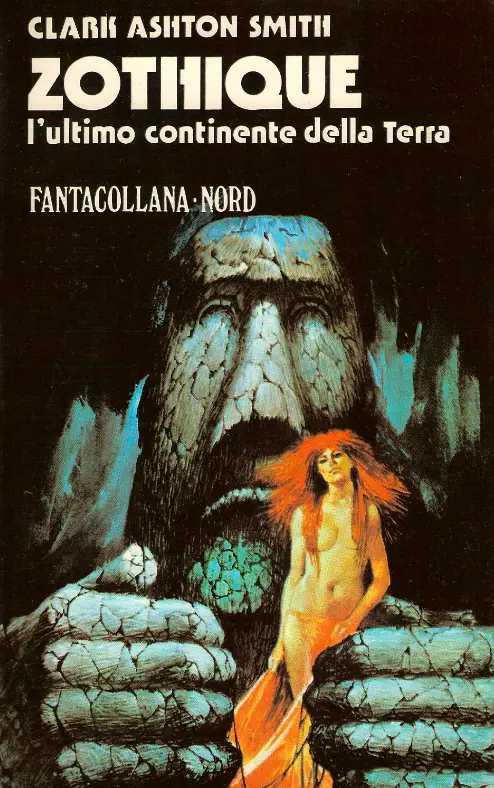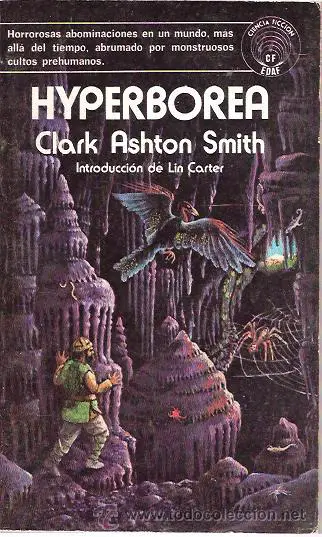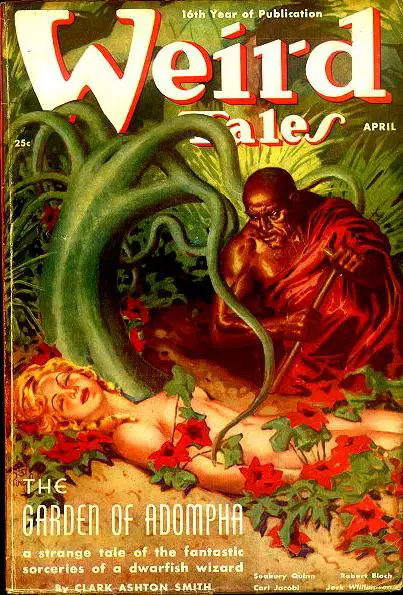Zothique is a non-place, albeit very concrete and real: Clark Ashton Smith imagines a world in which our current technology does not exist, and men live immersed in concrete elemental forces and invisible powers, but which act on what is earthly.
di Samuel Baricchi
cover: Clark Ashton Smith seen by Andrea Bonazzi
What is a term of Polynesian origins dating back to animist cultures that can be translated with "Life force", "spiritual power", "symbolic efficacy". Spirit is a term of Germanic origins which in philosophy is generically translated with "spirit" synonymous with life, "Vital force distinct from life itself and yet interacting with it"; a "form of existence radically different from matter" or even an absolute totality that includes every type of manifestation of reality, as for example in German idealism.
The sense of Gorgeous for the nineteenth-century romanticism it coincides with the Mana of ancient cultures. Man, faced with the grandeur of storms and lightning, snowstorms, sea trumpets, cyclones, thunder, hail and fire that falls steeply from the sky sees and perceives something similar to un numen, a sense of sacred respect, a sense of infinite macrocosm and microcosm, a perception of pure and truthful consciousness. Death and life mix together as two aspects of the same reality, as in the Eastern Taoist doctrine. As he perceives the infinite greatness of the natural elements, he feels and touches its infinite smallness with his hand.
In the painting The Wanderer on the Sea of Fog by Caspar David Friedrich the sense of perception of the What and Spirit in nature. A man, alone, above a rocky conformation, looks towards the horizon filled with fog and nonexistence, with some other rocks and hills in the distance. He is the metaphor of man immersed in transience and infinity at the same time. This condition leads literature and art in general to dedicate themselves, often and willingly, especially in works of imagination and which are steeped in the archetypal consciousness of ancient cultures, to describe this sense of omnipresent magic in nature, outside and inside. soul of human beings.

Spirit indicates "Spirit" and derives from Idealism. For Spirit of course "The whole that contains the whole" and is at the same time "present in everything". As happens in the animist cults, the divinity, the Spirit, is present in the tree, in the lightning, in the grass, as in the sky, on the top of the mountains and among the clouds and the rain and the snow and the hail. For Hegel il Spirit it also develops through the historical periods, through a path of «Thesis, Antithesis and Synthesis». First it manifests itself, then it denies itself with a sort of non-manifestation, a withdrawal from the visible, an existence of the non-existent, the What, the vital force that is not seen, but strongly felt, and then synthesized in a single sacred and ancient essence omnipresent in everything.
In 1871, the expression «animism" it was used by the English anthropologist edward tylor to define a primordial form of religiosity based on the attribution of an incorporeal and vital principle to natural phenomena, living beings and inanimate objects, especially for everything that directly affects the life of these populations and is essential for their survival: food products and their hunting and gathering, materials for making tools, jewels and shelters.
In Fantasy, especially in the subgenre Sword & Sorcery there are frequently examples of animist cultures and populations and the world is ancient, pure, religiosity and spirituality are lived and touched by the truth. Magical power has the same value as the sword. Through the use of the What it is possible to manipulate contingent reality by predicting, or influencing, concrete events. I quote the example of the sorcerer Thoth-Amon of Robert E. Howard, which already from its name archetypically recalls the god Thoth and the god Amon of Egyptian mythology, and gives it an aura, a What, mystical, transcendent, but at the same time very material and connected with the power of the earth.

Clark ashton smith wrote the short stories about the fictional continent of Zothique in the 30s, and they were first published in the magazine Weird tales, and in June 1970, collected and re-edited in a single volume. Zothique is the imaginative representation of the intrinsic value of animism and of What. The same author in a letter to L. Sprague de Camp dated 1951 describes the lands where his cycle of tales takes place, imagining a continent that is located between Asia Minor, Persia, India and parts of the North and of the 'East of Africa, and also includes other islands such as Naat, where cannibal tribes still exist.
zothique it is a non-place, although very concrete and real; Smith imagines a world where our current technology does not exist, and humans live immersed in between elemental forces concrete (symbolically we could almost say the sword) and invisible powers, but which act on what is earthly (which we could always define witchcraft). Sword and sorcery, sword & sorcery.
The author of the cycle of Zothique publishes The Empire of Necromancers in 1932 in the magazine Weird tales. This tale is a example of the power of the German Romantic Geist. The spirit. It takes place in the city of Yethlyreom in the realm of Cincor. Zothique is geographically a land that stretches from Arabia and Asia Minor and Persia to the Polynesian coasts, but it is not just a mere piece of land. It represents the cauldron of cultures and vitality that gives rise to the imaginary of the literature of the fantastic, in this case of the sword and witchcraft genre. Ancient and exotic populations.

Characters halfway between this earthly world and another, more subtle dimension, but which strongly influences the plot and the plots of the protagonists of the stories and novels of this genre. The element What is so concrete in Clark Ashton Smith that he almost seems to shout his affirmation of existence from the depths of the pages written by the author, from the essence of his choice of terms and words, everything springs from it and sends the reader back to a very powerful and devastating primordial and atavistic vital energy.
Geographical non-places are also symbols of forces and energies present in the human psyche and in the faculty of the imagination. Mythology itself is the representation of the collective unconscious of a people; for further information on the Jungian theory of archetypes and the collective unconscious, I refer the reader to another short essay on The Witcher, the saga of Geralt of Rivia by Andzrej Sapkowski and on the psychoanalytical research work of Carl Gustav Jung, through the analysis of popular traditions and myths and legends. Smith's cycle of Zothique takes place in very concrete places present in our imagination.
We remember from the same author Atlantis, Averoigne, and Xiccarph, kingdoms where necromancy is the close relationship with death and the immaterial has become a very complex and "high" type of wisdom and research, we could almost define it as a sort of "philosophy", in the eastern sense of the term, understood almost as popular doctrine and wisdom, something that you can therefore very touch and influence the real, although apparently unreal and detached from the earthly world of corporeality.
"My conscious attempt has been to deceive the reader into accepting an impossible fact, or a series of impossible facts, thanks to a sort of verbal black magic; to get it I use the rhythm of prose, metaphors, similes, tone of color, counterpoint and other stylistic resources, as in a kind of spell »
- Clark Ashton Smith

In the cycle of stories about Zothique, the funereal imaginary continent par excellence, the last continent of the earth, full of irrationality and deadly atmospheres, where necromancy is an accepted and shared science, we find a writing that perfectly expresses the atmosphere of Smith's no-place:
«Who walked the shadows of Zothique
Looking at the flames of the oblique red sun,
He never goes back to the former lands
But it runs along a belated coast
Of cities crumbled in the sand, of further seas
And dead gods who drink the salt wave.He who knew the gardens of Zothique
Where the fruits torn by the simorgh's beak bleed,
Tastes no fruit from greener hemispheres:
Among extreme trees,
In the solar cycles of dark years now
Sip an amaranth wine.The one who loved Zothique's wild girls
Don't go back looking for a sweeter love,
He does not distinguish the vampire's kiss from the lover's kiss:
For him the scarlet ghost
Of Lilith from the last necropolis of advancing time
He rises lovingly and maliciously.He who sailed in the galleys of Zothique
And he saw the looming of strange sheer spiers,
Must face the typhoon sent by the necromancer,
And take the place of the helmsman
On the oceans unleashed by the mutant moon
Or from the recreated Sign. "(Taken from "Zothique" contained in "The Dark Chateau and Other Poems", 1951, Clark Ashton Smith)
This step is loaded with What and primordial energy. Overflows with symbols and references to an imaginary as gloomy as it is vital. Anyone who has known the gardens of Zothique sips an amaranth wine. He who has gone into the darkest and most gloomy recesses of the imagination has drawn a nectar, a blood-colored essence, a metaphor for vitality and human mortality and transience itself. Smith in this passage is talking about himself, perhaps, but also about any author of literature of the fantastic, and also about any character protagonist of one of his stories.
Whoever has trodden the shadows of Zothique, looking at the flames of the oblique red sun, never returns to the former lands. Romantically here Smith echoes of decadent flavors not too dissimilar to The Flowers of Evil di Charles Baudelaire and the concept of the artificial paradise which here, instead, through a titanic imaginative effort, becomes artificial hell, but with a very positive meaning. It is in fact a world where necromancy represents the connection with the Spirit, the omnipresent Spirit, the What, the Sublime of the German romantics, and therefore, truth, wisdom, reason in its purest irrational unfolding.

8 comments on “The Geist, the Mana and the "magic naturalis" in Clark Ashton Smith's sword & sorcery"